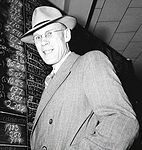| |||||||||||||||||||||||||||||||||||||||||||||||||||||||||||||||||||||||||||||||||||
61 seats in the Legislative Assembly of Alberta 31 seats were needed for a majority | |||||||||||||||||||||||||||||||||||||||||||||||||||||||||||||||||||||||||||||||||||
|---|---|---|---|---|---|---|---|---|---|---|---|---|---|---|---|---|---|---|---|---|---|---|---|---|---|---|---|---|---|---|---|---|---|---|---|---|---|---|---|---|---|---|---|---|---|---|---|---|---|---|---|---|---|---|---|---|---|---|---|---|---|---|---|---|---|---|---|---|---|---|---|---|---|---|---|---|---|---|---|---|---|---|---|
| |||||||||||||||||||||||||||||||||||||||||||||||||||||||||||||||||||||||||||||||||||
| |||||||||||||||||||||||||||||||||||||||||||||||||||||||||||||||||||||||||||||||||||
The 1955 Alberta general election was held on June 29, 1955, to elect members of the Legislative Assembly of Alberta.
Despite losing almost 10% of the popular vote (compared to its 1952 proportion of the vote) and 30% of its seats in the legislature, the Social Credit Party, led by Ernest C. Manning, received a slightly higher number of votes than in 1952 and won a comfortable majority for its sixth term in government.
The Liberal Party emerged as the principal opposition to the Social Credit juggernaut, winning over 30% of the popular vote, and increasing its legislative caucus from 4 members to 15. The Cooperative Commonwealth Federation won two seats. However its leader, MLA Elmer Roper, was defeated, ending his thirteen-year career in the legislature. Three Conservative Party candidates and various independents also won seats.
This provincial election, like the previous seven, saw district-level proportional representation (Single transferable voting) used to elect the MLAs of Edmonton and Calgary. City-wide districts were used to elect multiple MLAs in the cities. All the other MLAs were elected in single-member districts through Instant-runoff voting. This was the last provincial election to use PR. After this the electoral system was changed to Plurality voting.
The rise in opposition MLAs was only partially created in the cities where single transferable voting was in use. Only one more opposition MLA was elected in the cities versus the number elected there in 1952. Calgary elected two Liberals in 1955 versus one in 1952. The addition of seven Liberal MLAs was produced by the rise in Liberal Party popularity. This was a sign of dis-satisfaction with the SC government which by that point in time had been in power 20 years.
A portion of the increased opposition caucus were four Liberal MLAs who were elected in rural districts through vote transfers conducted under instant-runoff voting despite the Social Credit candidate in each of the districts being the leader in the First Count. The election of these four caused the government to abandon the STV/AV system that had been in use since 1924. After the system's replacement by single-member Plurality voting and various other reforms put into effect by Premier Manning, the SC government would take many more seats in subsequent elections.[1][2]
Voter turnout in this election was 68 percent.[3]
- ^ Hesketh, Bob (1987). "The Abolition of Preferential voting in Alberta". Prairie Forum. 12 (1): 123–144. ISSN 0317-6282.
- ^ A Report on Alberta Elections, p. 77-80
- ^ A Report on Alberta Elections, p. 81



